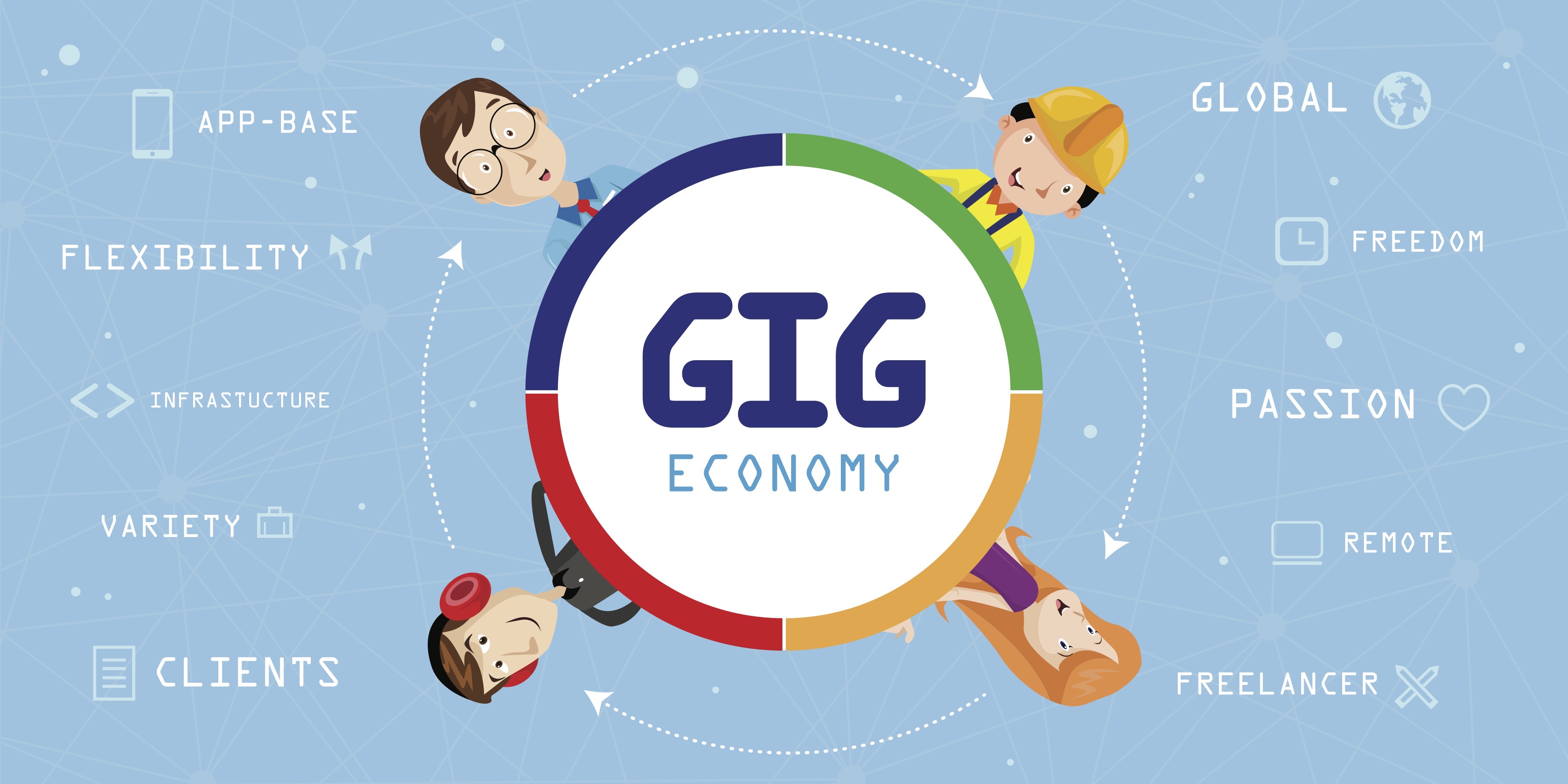
The gig economy and the need for specialists
20/04/2020
The gig economy is associated with the economy of small jobs which has developed with uberization. It is often correlated with job insecurity, but in reality, it also includes all the self-employed in the new economy, especially in the United States. The gig economy is no longer based only on trades, but also on skills.
By 2030, the global talent shortage could reach 85.2 million people due to the transformation of the economy, according to the research from the Korn Ferry Institute.
This justifies the use of self-employed workers, who will have to be attracted and retained, especially since their skills will be in high demand.
Besides traditional wage earners and freelancers, a new way of organizing work is developing - the gig economy. The word ‘a gig’ means ‘a concert’: in the past, musicians were paid by the performance, once the show was over. By adding the word ‘economy’ to it, we take up the idea of being paid by the task (and not monthly), as were the workers in the 19th century, but this time as self-employed workers.
‘Click workers’
Because of the Internet and AI advancement, today millions of ‘click workers’ around the world perform monotonous and simple ‘micro-jobs’. On platforms such as Amazon Mechanical Turk (AMT), they feed the databases of companies by classifying images, transcribing meetings, identifying text in photos or even emotions in sounds.
The dig economy is closely linked to the digital economy because contrary to what one might think, AIs are not sufficiently developed - they still need human help. And lots of it. Therefore, for the platforms it is worth it to rely on thousands of ‘little helpers’, who are put in competition to carry out these micro-jobs.
But by becoming a ‘click worker’ doesn’t mean you will earn your living ... unless you spend all your time there. Because the tasks appear at any moment and the competition is fierce, you have to be the quickest to get them. Some ‘click workers’ working for AMT sometimes become almost ‘machine slaves’, going as far as waking up at night to do their work in a limited time, in a total blur - because if they don’t finish on time, the job would be put back on the market, and they get nothing.
More than ‘little helpers’
But the gig economy is not limited to these micro-tasks and concerns more generally a variety of ‘small jobs’, more qualified, but again paid by the gig. Other platforms, such as Task Rabbit, offer, for example, home service activities, from cleaning to repairing a water leak, or assembly of furniture. Besides delivery services like Uber and Deliveroo, there are also translation sites like Gengo, and freelancing platforms like Upwork and Freelancer, which already bring together millions of freelancers capable of responding to any demand for expertise, via an auction and skills rating system.
The hyperspecialization of the workforce and immediate access to the best self-employed workers on the market allow companies to innovate, to become more productive and more flexible. And at a lower cost. Therefore, it is a very important factor for competitiveness.
Flexibility and freedom
Will the gig economy eventually become a dominant job organization? Experts predict that the current job market should disappear within 20 years and give way to an era of win-win deals when the notion of the profession will make way to the status of employability.
For companies, it’s a good way to have a lot more skills, very quickly, and at attractive costs. For workers - freelancers, digital nomads, and mobile workers - this also means more flexibility and freedom.
The workplace has moved from a place where many workers had the same employer for most of their working lives to the place where job changes are much more frequent and where few workers choose long-term jobs.
Being self-employed without the restrictions of a boss has always been an aspiration for many workers. What could be better than being able to define your own working hours, tasks and the location of the workplace itself?
However, for each person who chose to work in the gig economy, there were others who did not have a choice. Some workers were pressured into self-employment because employers hired contract workers to avoid the costs of health care and other benefits for full-time employees. In addition, many older workers were replaced during the Great Recession and opted for self-employment as a last resort, since they could not return to traditional employment.
The result was the emergence of a gig economy where workers are called upon by employers to work on a project basis. Individuals like actors, musicians, film production workers and seasonal agricultural workers always migrated from gig to gig, but now the trend has spread to many other areas, especially in the service industries.
Common professions for self-employment
According to Upwork, a large online network connecting self-employed with employers, the popular professions include designers and creatives, web, mobile and software developers, administrative support specialists, writers and translators, accounting/financial professionals/consultants, business professionals, IT and networks, sales/marketing professionals/customer service, lawyers/paralegals, engineers and architects, data science, and analysis specialists.
Careercast also lists home health aides, occupational therapists and delivery drivers as well as other professions that offer growth opportunities for freelancers.
Future projections for the gig economy
By some estimates, self-employment will grow by almost 7% from 2014 to 2024. In another survey by FreshBooks of 2,700 American workers, the number of self-employed workers will increase to 42 million by 2023. Millennials seem particularly predisposed to freelance work, and this study should represent 42% of self-employed. Intuit estimates that the level of self-employment will be much higher (43%).
The coronavirus pandemic and the quarantine measures ordered by many governments to contain it will make adjustments to these prognoses, greatly affecting the trends.
